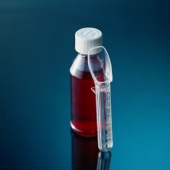Using metrics, not teaspoons, reduces medication errors, American Academy of Pediatrics says
MONDAY, March 30, 2015 (HealthDay News) — The best way to measure liquid medications for children is in metric milliliters, according to a committee from the American Academy of Pediatrics. Accidental medication overdoses send more than 70,000 children to U.S. emergency departments each year, according to background information with the statement, which was published online March 30 in Pediatrics.
The statement outlined specific recommendations aimed at reducing errors that can result in an overdose. In addition to using only milliliters, the academy recommends that units are dosed to the nearest 0.1, 0.5, or 1 mL and that no other abbreviation is used except mL. It also recommends that zeroes come before a decimal, such as 0.5, but that no zeroes come after the last number of a decimal. Both recommendations are designed to prevent caregivers from accidentally measuring out 10 times the prescribed dose.
The medication’s concentration should be clearly labeled on prescriptions along with non-abbreviated instructions on how frequently the medication should be given, the academy advises. Parents may be less familiar with the metric system, so doctors should review the dosing with families when the medications are recommended, and pharmacies, hospitals, and health centers should only print prescription labels with metric dosing and include an appropriate measuring device. Dosing syringes and cups should not have any markings other than mL and be close to the size of the recommended dose, the policy states.
“Metric dosing is the most precise way to dose medications and prevent overdoses,” Ian Paul, M.D., lead author of the new policy statement from the American Academy of Pediatrics, told HealthDay. Paul is chief of academic general pediatrics at the Penn State College of Medicine in Hershey.
Copyright © 2015 HealthDay. All rights reserved.








